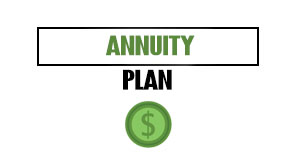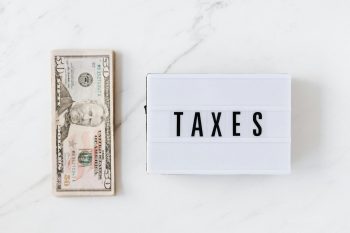Are you dreaming of a life where your investments pay you back? It’s not a pipe dream.
Let’s say your portfolio has $100,000 worth of dividend-paying stocks. Rather than just watching your money grow, it is now working for you, generating a steady income. Sounds pretty sweet, right?
In short, you can achieve financial freedom by investing in dividends. Interested? If so, this post breaks down what you need to know: how to build a dividend portfolio, what tools you need to find those hidden gems, and how to maximize your returns.
Whether starting with $100,000 or just beginning your investment journey, these steps will guide you every step of the way.
Table of Contents
ToggleWhy Focus on Dividend Stocks?
In addition to offering regular income, dividend stocks also offer potential capital appreciation. Dividend-paying companies like Dividend Aristocrats and Dividend Kings are often financially stable and well-established. They’re popular among income investors because they offer reliable returns.
Why Use M1 Finance?

M1 Finance was my first choice for building this portfolio for several reasons;
- Investment pie concept. With M1 Finance’s “pie” system, investors can allocate funds across various stocks or ETFs. It makes rebalancing and portfolio management easier.
- Trust account capability. As part of my self-directed 401(k) structure, M1 Finance supports trust accounts. As a result, I could transfer $100,000 seamlessly into my account.
- User-friendly interface. In addition to its research tools and intuitive design, the platform makes investing accessible to a wide range of investors.
Important Disclaimer
Before getting into the details, remember this is only an educational article. While I am a certified financial planner, this is not personalized investment advice. If you want to align your investments with your goals and tolerance for risk, speak to a financial professional.
Researching Dividend Stocks

The key to building a successful dividend portfolio is thorough research. My approach was as follows;
Using ChatGPT to generate initial ideas.
A tool like ChatGPT can help identify dividend stocks that could pay dividends in the future. Using ChatGPT, I entered the following prompt:
“I have $100,000 to invest in a dividend stock portfolio. My goal is to generate $12,000 per year (or $1,000 per month) in dividend income. The portfolio should consist of 80% Dividend Aristocrats or Dividend Kings, with the remaining 20% in REITs or MLPs. Please list 20-30 stocks with their dividend yields.”
From there, ChatGPT generated a list of stocks, including well-known companies such as AT&T, Chevron, Coca-Cola, and IBM. However, although this list provided a good starting point, I refined my selection using additional tools.
Exploring SureDividend.com.
Another excellent resource for dividend stock research is SureDividend.com. The service offers in-depth analyses of Dividend Aristocrats, Dividend Kings, and other dividend-paying stocks for about $59-$99 per year. As part of their comprehensive reports, they include dividend yields, payout ratios, and historical performance data.
For example, I accessed their Dividend Aristocrats list, which includes 68 stocks with a 25-year dividend history. I sorted these stocks according to dividend yield to find top performers to include in my portfolio.
Leveraging M1 Finance’s research tools.
Using M1 Finance’s built-in research tools further simplified the process. With the help of filters such as market capitalization and price-to-earnings ratio, I generated a list of high-quality stocks. Among the top names were ExxonMobil, Pfizer, and Bank of America.
Building the Portfolio
Step 1: Define your goals.
My primary goal was to generate $1,000 in dividend income per month. A portfolio yield of approximately 12% is required to achieve this goal, which may be challenging and risky. But, choosing a mix of Dividend Aristocrats and high-yield REITs or MLPs allowed me to balance risk and return.
Step 2: Allocate funds.
As part of my portfolio, I created a “Dividend Pie” using M1 Finance’s pie system. Based on dividend yield and stability, each slice of the pie represents a stock or ETF.
As an example;
- 80% Dividend Aristocrats/Kings. Stocks that are predictable, low-risk, and have a proven track record.
- 20% REITs/MLPs. To boost overall income, invest in high-yielding assets.
Step 3: Monitor and adjust.
A dividend portfolio requires ongoing management. So, you’ll want to keep an eye on your holdings to ensure they are aligned with your goals. If a stock cuts its dividend or underperforms, consider replacing it with one that performs better. Rebalancing tools, such as those offered by M1 Finance, can assist you in maintaining your target allocations.
Key Considerations
Diversification.
Don’t put all your eggs in one basket. To reduce risk, diversify across different sectors and industries. You might want to consider stocks from the healthcare, energy, consumer goods, and financial sectors.
Dividend growth vs. high yield.
If you’re looking for immediate income, pick stocks with a history of growing dividends rather than high-yield stocks. These stocks often have a higher rate of long-term return and stability.
Reinvestment.
Dividends can be reinvested to accelerate the growth of your portfolio. Many platforms offer automatic dividend reinvestment, such as M1 Finance.
Final Thoughts
It takes a lot of research and planning to build a $100,000 dividend stock portfolio. However, you can create a diversified portfolio with tools like ChatGPT, SureDividend.com, and M1 Finance. The principles outlined here can help you get to financial independence, even if you’re starting small.
Don’t forget that investing is a journey, not a sprint. Don’t give up; stay informed, and enjoy your dividend investing journey.
FAQs
What is a Dividend Stock Portfolio?
Dividend stock portfolios are made up of stocks that distribute a portion of their profits to shareholders regularly (usually quarterly).
A few key features are:
- Income generation. Contributes to retirement planning and income supplementation by providing a steady income stream.
- Growth potential. Over time, dividend stocks can appreciate and provide income.
- Diversification. Diversifying your portfolio by investing in companies from multiple sectors can reduce your overall risk.
How do I choose dividend stocks?
- Focus on financial strength. Invest in companies with consistent dividend payments, strong financials (low debt and high profitability), and sustainable competitive advantages.
- Consider dividend yield. Based on the stock’s current price, this metric represents the dividend payment as a percentage. The higher the yield, the higher the income, but the higher the risk.
- Evaluate dividend growth. Look for companies that have increased dividend payments over time (dividend aristocrats). It is an indication that the business is healthy and growing.
- Industry diversification. Make sure you don’t put all your eggs in one basket. To reduce risk, invest in a variety of sectors.
What are the risks of investing in dividend stocks?
- Dividend cuts. During economic downturns or financial difficulties, companies may cut or eliminate dividends.
- Market volatility. Stock prices can fluctuate significantly, affecting both income and capital appreciation.
- Inflation risk. As inflation increases, dividend income may not keep pace, eroding purchasing power over time.
How do I build a dividend stock portfolio?
- Start with research. Be sure to research potential investments and understand their risks thoroughly.
- Diversify your holdings. Diversify your investments across different industries and companies.
- Rebalance regularly. You should periodically review and adjust your portfolio to maintain your desired asset allocation and risk tolerance.
- Consider Dividend Reinvestment Plans (DRIPs). Over time, you can accelerate growth by automatically reinvesting dividends.
When should I consider a dividend stock portfolio?
- Retirement planning. It is possible to generate a steady income stream during retirement through dividends.
- Income generation. You should consider investing if you are looking for regular income.
- Long-term investing. Since dividend investing is generally a long-term strategy, it is best suited to investors with long-term investment horizons.
Image Credit: RDNE Stock project; Pexels
















